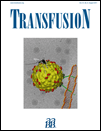Healthy donor effect: its magnitude in health research among blood donors
Abstract
BACKGROUND: The healthy donor effect has been mentioned as a methodologic problem in blood donor health research. The aim of this study was to investigate different elements of the healthy donor effect.
STUDY DESIGN AND METHODS: First, recent donors (<4 years registered as a donor) were compared with the general population. Second, active and lapsed donors were compared. Third, short-career donors (<14 donations) were compared with long-career donors (>37 donations). Various health and lifestyle indicators were used as outcome measures.
RESULTS: Compared to the general population, recent donors had a better self-rated health (odds ratio [OR], 1.43; 95% confidence interval [CI], 1.27-1.61), visited the general practitioner (GP) less often (OR, 0.66; 95% CI, 0.60-0.72), and were less often treated by a specialist (OR, 0.83; 95% CI, 0.75-0.93). Recent donors also exhibited a healthier lifestyle compared to the general population. When examining active versus lapsed donors, similar results were found in favor of active donors. With respect to donation career, long-career donors were healthier than short-career donors, but effects were less strong; the ORs were 1.33 (95% CI, 1.15-1.54) for self-rated health, 0.85 (95% CI, 0.76-0.94) for GP visit, and 0.83 (95% CI, 0.68-1.00) for specialist treatment. When comparing long- and short-career donors on lifestyle indicators, there were barely any significant differences.
CONCLUSIONS: The findings strongly point to the presence of a healthy donor effect when comparing donors with the general population and active versus lapsed donors. The healthy donor effect was less pronounced within active donors, when comparing long- and short-career donors. Therefore, health research should primarily be carried out within active donors.




